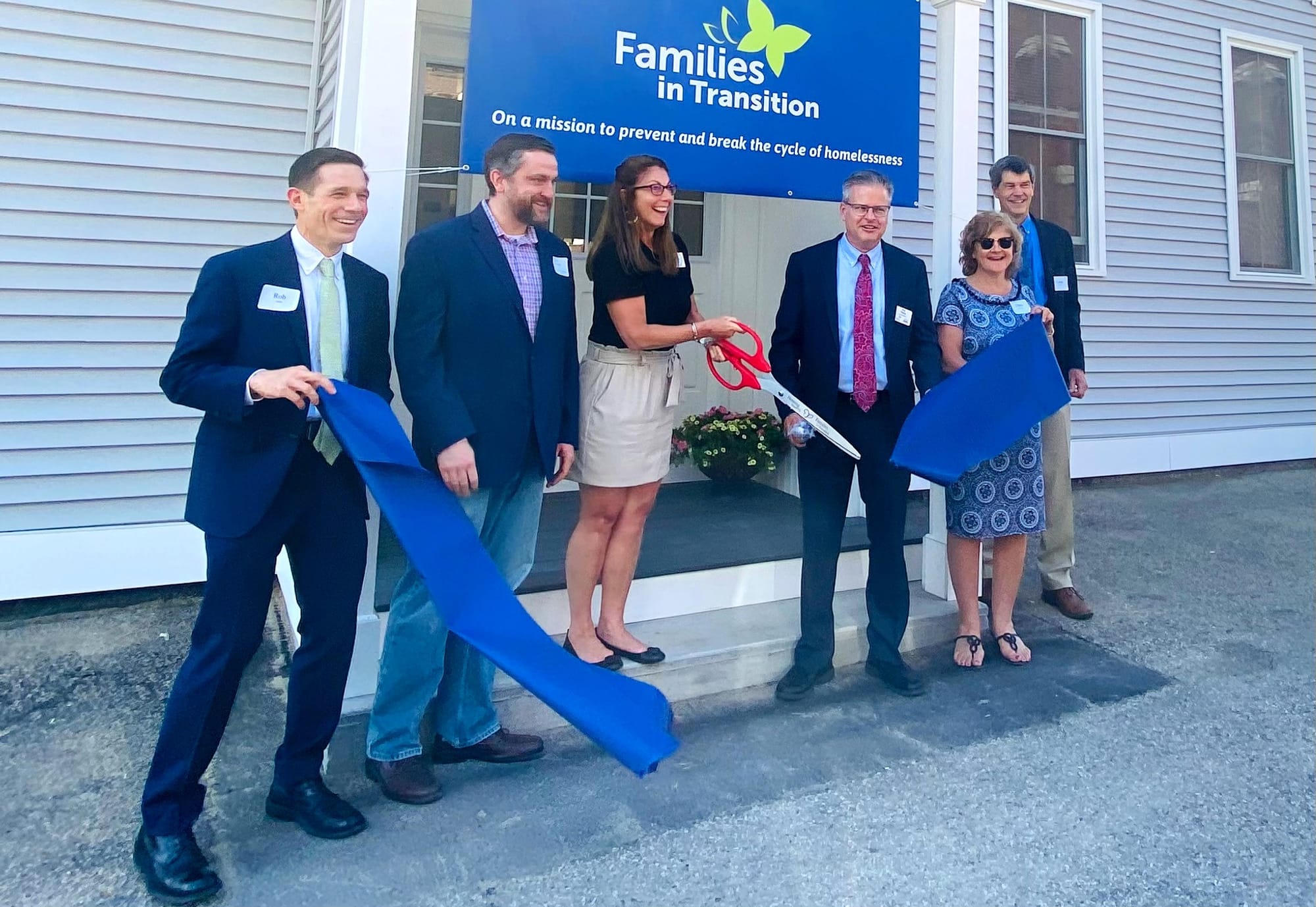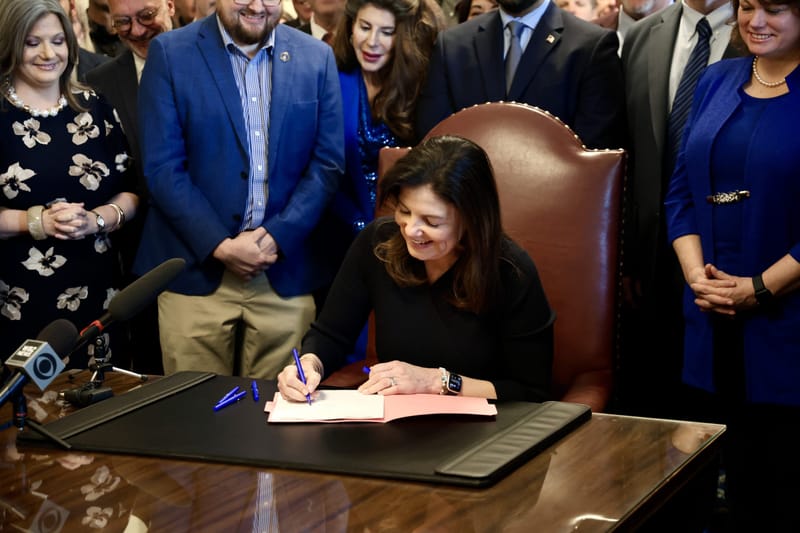Some positives in New Hampshire’s housing outlook amid the chaos
Creating more affordable housing in New Hampshire was already a challenge, but big question marks related to proposed state budget cuts, massive federal policy and funding changes, and continuing supply-chain slowdowns and price hikes may make it hard to find any positives on the horizon.

MANCHESTER, NH – Creating more affordable housing in New Hampshire was already a challenge, but big question marks related to proposed state budget cuts, massive federal policy and funding changes, and continuing supply-chain slowdowns and price hikes may make it hard to find any positives on the horizon.
Rob Dapice, executive director and CEO of the New Hampshire Housing Authority, however, sees several.
“For all the doom and gloom that we talk about, there are a lot of good things happening, good projects that are getting finished and opened and, people who are achieving home ownership in spite of the challenges,” Dapice said in a recent interview with Ink Link. NH Housing is a self-supporting public corporation that promotes, finances, and supports housing solutions.
However, he said, the lack of supply, rising costs, and the number of people in the state who need housing but can’t get it, must be addressed.
One of the biggest positives over the past year is the bipartisan push in the state Senate to pass legislation that will help encourage more housing construction, even if it all doesn’t make it to the finish line.
“I think there are some really hopeful signs in the Legislature, and especially on the zoning reform side,” he said. “There’s bipartisan momentum in the Senate that saw some stuff get passed that I think wasn’t realistic just a couple of years ago.”
In a time of hyper-partisanship, “It can give us all hope that we have elected officials who are just trying to solve problems for the people they serve…I’m very hopeful that will continue.”
All of the legislation the Senate or House passed must still be approved by the other chamber and pass the governor’s desk to become law.
Increasing Affordable Housing Fund ‘critical’
Dapice said that the most important piece of legislation passed by the Senate was SB 81, which increased the state Affordable Housing Fund to $10 million, doubling the amount currently allocated, and adding a one-time $25 million allocation. The funding comes from the Real Estate Transfer Tax.
The House did not include the increase in the FY 2025-26 budget it approved April 10, despite passage earlier this year of a House bill similar to the Senate one. The budget is now before the state Senate Finance Committee, which is making amendments that the Senate will vote on June 5.
“Funding for the Affordable Housing Fund is really critical,” Dapice said. “If that fund does not receive money in the state budget, then there are just a lot of new affordable homes that are really aimed squarely at where the need is most acute that are not going to get built, and so, a lot of federal resources that will not be leveraged.”
Another example of bipartisan cooperation to boost housing in the state was last month’s passage of SB 84, which restricts the minimum lot size for single-family homes to 22,000 square feet or less – half an acre – for property that is on municipal sewer or water lines. The Senate also approved SB 282, which allows residential buildings of four to six stories to have only one stairwell if they meet certain fire safety requirements, such as including sprinklers. Builders say that having just one staircase will substantially lower the cost of construction. SB 284 limits how many parking spaces a municipality can require for developments with 10 units lor less.
In the House, HB 631 was approved, requiring municipalities to allow multi-family residential developments in commercial zones, as long as there is retail or commercial space on the first floor.
Dapice said that it’s important that the Legislature is having a hand in changing local zoning and other requirements, as well as some state permitting requirements, to remove barriers to build housing, particularly as it becomes increasingly expensive.
“It’s those barriers that have driven up the cost of housing and we really need to take a very hard look,” he said. “It’s not that hard to see where we’re headed to.”
He said that if New Hampshire doesn’t bring down the cost of creating housing, it will become like some states – California, Massachusetts, New York – that “spend a ton of public funds on housing, and they still have really high housing costs and consequently very high levels of homelessness.”
“So we’ve got to be more like the states that have allowed the market to meet the demand, and keep costs low in that way,” he said.
HOP success stories
He cited the state’s Housing Opportunity Planning grant program, which incentives municipalities to create housing opportunities, as an example of how programs and collaboration can work. The program, is part of the Municipal Planning and Zoning Grants Program, funded with $5 million American Rescue Plan Act money from the Biden administration. Last year, another $2.9 million was added to it. The state Department of Business and Economic Affairs contracted with New Hampshire Housing to administer it.
Some 98 HOP grants have been awarded to 75 cities and towns, ranging in size from Sugar Hill (population 647) to Keene (population 23,047). These are “municipalities that are thinking about these questions, trying to make good changes and getting buy-in from their citizens.”
The grants provide money to towns and cities so they can look at their zoning or other regulatory barriers to affordable housing, identify potential changes to local land use regulations, and update regulations.
NH Housing published a report with “success story” case studies of 11 of the municipalities.
“Each of the case study communities tackled the housing crisis in their own way with solutions including amending the community’s accessory dwelling unit ordinance, implementing a form-based code, and embracing ‘missing middle’ housing typologies,” the report says. “The housing policies and community engagement tools [illustrated in the report] should serve as a useful example for communities across the state and beyond.”
Federal tax cuts could have impact
Of course, the success stories and positives in the Legislature only chip away at the housing challenges New Hampshire faces, both on the state and federal level.
The continuing budget resolution Congress passed last month keeps funding levels for programs that NH Housing administers more or less level, but there’s a lot of uncertainty about the future.
“There are some concerns,” he said. The one that has the most direct impact on the people NH Housing serves that “relies on consistent federal funding” is the housing choice voucher program.
The program requires low-income renters to pay an income-based portion of rent and utilities, with NH Housing paying the balance, directly to the landlord. The program has been underfunded for several years, Dapice said, not keeping up with increasing rents.
NH Housing in 2024 issued 4,338 vouchers, but has an average waiting list of 11,800. It can take six to eight years for someone on the waiting list to get rental help, according to the 2024 annual report. The agency issues about a third of the state’s vouchers, which local housing authorities issuing the rest.
“The amount that we pay per client per month has gone up quite a bit because rents have gone up a lot,” Dapice said. “These are overwhelmingly folks who are seniors or have a disability and are on a fixed income in a lot of cases, so their incomes are relatively stagnant, certainly not increasing at the same rate that rents are.”
He said that it makes it difficult for someone who applies for a voucher to get one, even if they’re income-qualified and have disability and are homeless.
“I think a lot of people in the general public may think it’s just like food stamps, right? You sign up and and get a voucher. But it’s not like that.”
The looming extension to the federal 2017 tax cuts, as well as funding it by eliminating federal income tax on overtime and tips, removing billions from the federal revenue stream, could mean deep cuts to programs that support lower and moderate-income people, and therefor increase the housing crisis.
“it’s really a difficult task they’ve laid out for themselves,” he said, of Congress.
The tax code itself is an important tool for promoting affordable housing, through the use of tax exempt bonds used for first-time homebuyer loans and low-income housing tax credits for developing multifamily affordable rental housing, as well as construction and preservation, he said.
“Those are really important and it’s important that they are preserved in whatever tax legislation gets passed this summer.”
State proposals may make crisis worse
On the state level, despite the positive bipartisan efforts, there are also proposals in the budget that will likely increase the need for housing. The House’s budget changes eviction policy to allow landlords to evict a tenant at the end of a lease term without having to show cause. The budget also eliminates the Housing Appeals Board, which means tenants with a claim would have to take it to court or not have a claim at all.
Asked about the eviction policy change, Dapice said, “I can see both sides of that. It’s a reasonable conversation to have. I just feel like right now, given the lack of housing and what we’ve seen in terms of rental increases and the number of people already who are becoming housing insecure… it just doesn’t seem like the time is now to make that change.” Particularly, he said, with the national Homelessness Point-in-Time count showing New Hampshire as the state with the highest per-capita year-over-year increase in homelessness.
“It’s not like we’re afraid to have the conversation about what the right policy choice is here,” he said. “It just feels like the timing to make that change right now would be pretty harmful to New Hampshire families.”
Of the appeals board, he said, “It’s certainly a really important purpose. It’s pretty cost efficient.” He added that the board doesn’t have the power to overrule town zoning, or anything like that, “It’s just a check that’s very helpful to make sure the towns are living by their own rules and it’d be a real shame to see that go away.”
Housing crisis bad for business
Some of NH Housing’s own positives in 2024 were:
- Despite lack of inventory and median sales price soaring above $500,000, it helped more than 1,100 households buy homes in fiscal year 2024, with the help of government and privately insured single-family loans, largely for first-time homebuyers, supported by the Federal Housing Administration, Fannie Mae, USDA Rural Development, and the Department of Veterans Affairs.
- Supported 26 multi-family housing developments in 2024, comprising 1,680 living units.
- Launched the Moving to Work program, funded by the U.S. Department of Housing and Urban Development, to help housing voucher holders find employment, receive financial education, become self-sufficient, and expand housing choices.
The state’s housing crisis, “is a humanitarian crisis, in terms of homelessness,” and the other negative effects of being housing insecure, Dapice said. “But it’s also bad business,” he said. It’s expensive for the state, and municipalities, to deal with lack of housing, “And not good for businesses when their employees can’t find places to live.”
If there’s just one over-arching thing he’d like the state’s residents to understand, it’s that supply is the problem when it comes to the housing crisis, but that the need for supply keeps growing.
“If there’s one thing that needs to change in order to make housing attainable for everybody in New Hampshire, it’s lowering the barriers to development so we can have more supply.”
But with housing costs so high, and increasing, the amount of people who are affected by it increases as well.
“And these are people who are at risk of homelessness, seniors, people with disabilities,” he said. “We really can’t just say ‘supply supply supply,’ we need to make investments and provide affordable housing for those people.”





